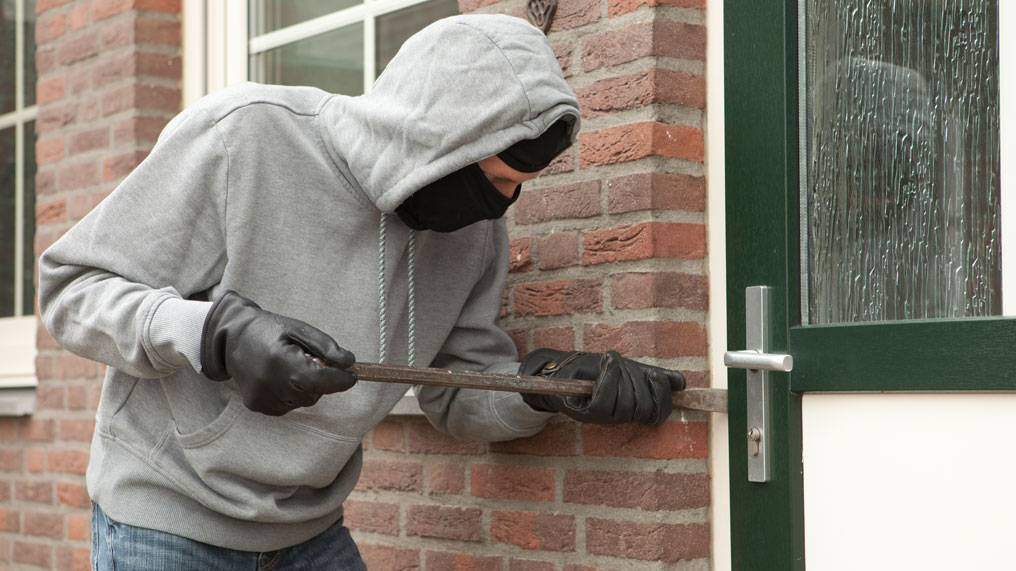If you’ve been the victim of a burglary, you may recognise the emotional distress that many people experience. Just knowing that someone has been inside your home and invaded your private space can leave you feeling unsettled for a long time.
But although thousands of incidents are reported each year, burglary is actually on a downward trend. In March 2021, rates of domestic burglary had fallen by 20% compared to the previous year according to the Office of National Statistics.
Increasingly sophisticated security alarms have helped to deter potential thieves, but with such a huge choice available it can be hard to know which one is right for you.
Home alarm systems come in different shapes and sizes, to suit different budgets, and all have their own pros and cons. So, before you make any decisions, be sure to understand what each type does and whether it suits your needs.
Types of security alarm
Wireless vs wired burglar alarms
A wireless burglar alarm can be the best option if you want a security alarm that causes minimal disruption when installed.
Wireless alarms used to be viewed as less reliable than their hardwired counterparts, but these days they’re both stable and secure. Wireless burglar alarms are also quicker to install than a traditional system. And, wireless systems can be moved and extended with ease.
However, there are some downsides too. The batteries will need to be replaced every couple of years, so they’ll be more expensive to maintain long-term. Also, just like mobile phones or Wi-Fi routers, they can suffer interference that could mean they don’t respond correctly. But luckily, this is becoming rarer as they’re much more reliable than they used to be.
A wired system is often cheaper to buy than a wireless system, but it costs a lot more to install and is more disruptive. It’ll typically take a day or two to install a wired system, as cabling has to be routed around your house. In contrast, a wireless system can be up and running within a few hours.
Bell-only alarms
A bell-only alarm is the most common type of burglar alarm system, and the cheapest. As the name suggests, it sounds an audible alarm if the system is activated, usually with a strobe light flashing simultaneously as a visual cue to anybody outside.
This type of intruder alarm works well as a deterrent to stop the more opportunistic burglars, and the noise can often be sufficient to halt less determined thieves. If you’re home, it will also alert you to a break-in and make your neighbours aware of a problem.
The issue with a bell-only alarm is that many people will ignore it, much like a car alarm. And, given that bell-only systems have to stop their external alarm after 20 minutes, this could mean that a break-in doesn’t get reported to the police. However, it should deter most burglars and is certainly better than no alarm at all.
Monitored burglar alarms
Monitored home alarm systems communicate directly with an Alarm Receiving Centre (ARC). These centres monitor your alarm status with software and are manned by staff who respond to the alerts.
There are different types of monitored burglar alarms:
- Digital communicator. This type of security alarm has a dedicated phone line that can only make outgoing calls. If your alarm goes off, it calls the ARC and sends it a secure data packet. The ARC team then contact registered key-holders or the police. The main downside of this type of system is that if the line is cut, the alarm can’t call out.
- Single path signalling. This system sends an alert via a mobile phone network, mobile data network or phone line. The great strength of this type of burglar alarm is that the signal path is monitored, so if it’s cut or tampered with, the system alerts the ARC.
- Dual path signalling. These security systems are exactly the same as the previous type, but they also have a backup signal path to default to if there are any problems on the primary line.
Monitored alarm systems offer greater security and peace of mind, and are especially suited to remote properties or those that are vacated for long periods of time. However, you will have to pay an annual fee to the ARC, an annual maintenance contract for the alarm installer, and other fees like phone line rental.




